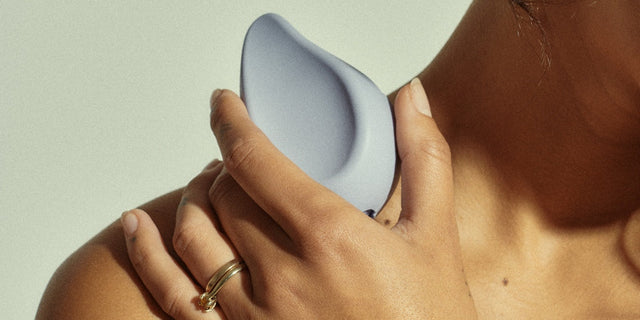Did you know many of our customers wear Modibodi to help manage incontinence?
In fact, Modibodi was actually created because our Founder experienced light bladder leaks herself. She couldn’t find anything on the market that was A) sustainable or B) suited her lifestyle – so she created underwear that would work as hard as she does.
Incontinence is a term used to describe an involuntary or accidental loss of urine. It is a widespread condition, which can range from a small leak to a complete loss of control from the bladder. It is so common that over 5 million Australians have issues with incontinence for a number of reasons. But don’t fret! Incontinence can be managed, controlled and in some cases, cured.
At Modibodi we are constantly striving to open the conversation and taboo of incontinence, so people don’t have to suffer in silence, it's more common than you think!
An estimated 30% of womxn aged 30-60 experience incontinence compared to just 1.5-5% of men – and although it is more common in womxn than men, we still have a range for men too. So if you are recovering post-op, or are an occasional dribbler, we’ve got you covered! (Click here for Modibodi Men).
Urinary incontinence is commonly associated with pregnancy, childbirth, obesity, menopause or simply, age. Age is a common cause of incontinence as the muscles in the urethra weaken, as a person gets older. Something as small as a laugh, cough or exercising can cause a person to leak unwantedly.
Some treatments recommended by health professionals include:
- Pelvic floor exercises – Kegel exercises help strengthen the urinary sphincter and pelvic floor muscles, which help prevent urine leaks.
- Bladder training – Controlling the urge, double voiding and bathroom schedules helps some people regain control over their bladder movements.
- Medications – Antidepressants, topical estrogen and anticholinergic.
- Medical devices – Urethral inserts, Botox, sacral nerve stimulator, bulking agents, radiofrequency therapy and a pessary.
- Surgery – Sling procedures, colposuspension and artificial sphincter.
Remember to speak to your doctor first before proceeding with any of the above treatments. If you’d like some more tips from Mai Vu, our in-house pelvic floor physio, click here.
So, what to do whilst you’re working on improving your incontinence? Put up with wearing a pad or liner each day? No way. Modibodi is designed to help you manage your leaks and feel supported and confident. Our heaviest absorbency can hold up to 20mls of liquid (with a 50ml product on the way!), so you won’t have to hold back those big belly laughs or sneezes when you’re in public next time!
Using a three-layer Patented Modifier Technology that's only 3mm thin, our pee-proof underwear wicks moisture away from the body and locks it into the centre layer, meaning you can feel dry and smell fresh all day long. Best of all it moves with your body, doesn’t wedge into your bum and doesn’t feel bulky like a pad. Sick of cringing to that “scrunching” sound? Our underwear is silent so that our voices can call out loud to talk about incontinence in our own way.
There are several different types of incontinence, all of which can cause unfortunate inconvenience in someone’s life. These include:
- Stress incontinence: Urine leaks out while coughing, laughing, or doing exercise.
- Urge incontinence: There is a sudden and intense urge to urinate, and urine leaks at the same time or just after.
- Overflow incontinence: The inability to empty the bladder completely can result in leaking.
- Total incontinence: The bladder cannot store urine.
- Functional incontinence: Urine escapes because a person cannot reach the bathroom in time, possibly due to a mobility issue.
- Mixed incontinence: A combination of types.
To find out more on the difference between stress vs urge incontinence, click here.
Anyone who is concerned with incontinence should speak to their doctor. There's nothing to be embarrassed or ashamed about when dealing with this condition, so reach out and empower yourself to feel your absolute best. If you want to hear from someone else who has navigated their own incontinence journey - click here to read Shani’s story.









